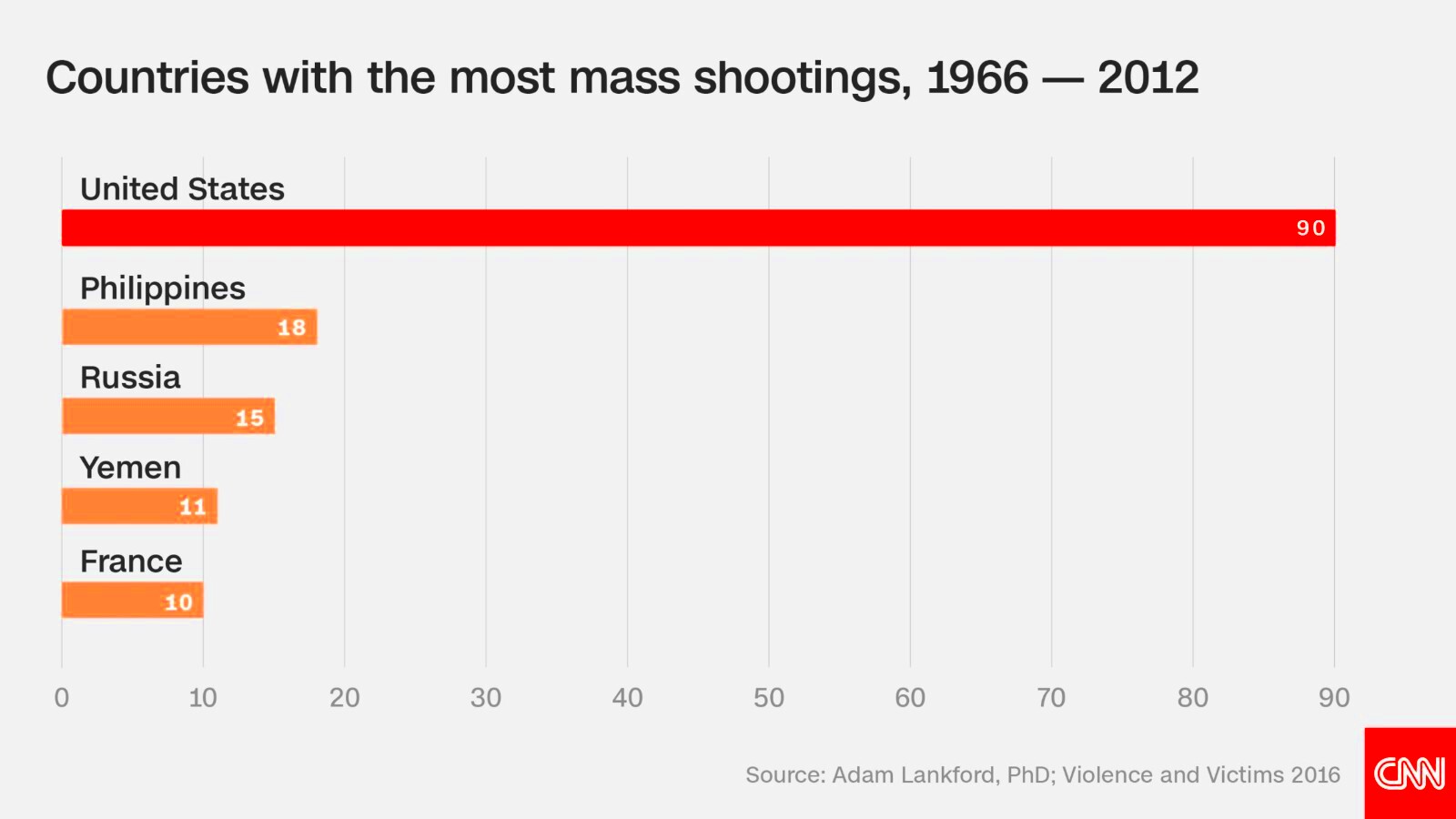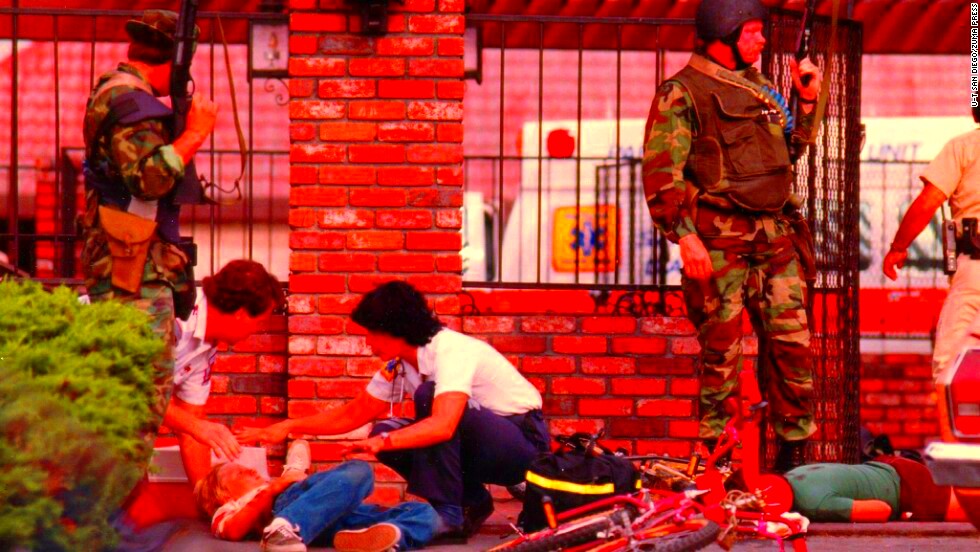Strong emotions and complex discussions are often evoked by
images of mass shooters. These visuals can shape the public’s perception, influence policy debates and impact how communities respond to violence. Understanding these
images requires a careful examination of their context and implications.
Understanding the Context Behind the Images

The
images associated with mass shooters are beyond just people; they represent certain problems of society in general. Some of the most important are as follows:
- Media Influence: The way media portrays these events can amplify certain narratives.
- Public Fear: Images can create a sense of fear, impacting how people view safety in public spaces.
- Cultural Reflection: These images often highlight deeper societal problems, like mental health issues and gun control debates.
In addition, it is important we look at the victims’ and communities’ reaction to these pictures in understanding them. It is essential to have discussions about accountability and portrayal.
Historical Overview of Mass Shootings in the USA

In the United States, mass shootings have been happening for a long time and they all form part of a tragic history. Below is a summary of critical occurrences:
| Year | Event | Location |
|---|
| 1966 | University of Texas Tower Shooting | Austin, Texas |
| 1999 | Columbine High School Shooting | Littleton, Colorado |
| 2012 | Sandy Hook Elementary School Shooting | Newtown, Connecticut |
| 2017 | Las Vegas Shooting | Las Vegas, Nevada |
For that reason, knowing this history is important when dealing with today’s news as well as the continuing discussion around gun violence. Every occasion presented a different range of pictures and narratives which altered the way people thought about it and affected what they did about it.
Impact of Media Representation on Society
Mass shootings and their “perpetrators” are influenced by the media. It is evident that how these stories are presented in the media have an impact on what people think about them. Here are some key points to consider:
- Sensationalism: Media often focuses on shocking details, which can sensationalize violence and make it more appealing to viewers.
- Normalization: Repeated coverage may normalize such acts, leading some to view them as a way to achieve notoriety.
- Victim Focus: Some media outlets emphasize victims' stories, which can foster empathy and highlight the human impact of these tragedies.
Nevertheless, focusing on the shooter may eclipse his victims and surrounding inhabitants. Key factors to consider in evaluating this form of representation include how it impacts collective perception as well as legislative conversations concerning gun-related aggression.
Ethical Considerations in Using Shooter Images
When engaging in conversations or applying visuals of mass killers, one must consider the moral factors involved. Below are some key issues to reflect on:
- Respect for Victims: Using these images can be seen as disrespectful to victims and their families.
- Public Sensitivity: Images can trigger trauma for those directly affected by violence or who have experienced similar events.
- Stigmatization: Focusing on the shooter can reinforce negative stereotypes about mental health and gun owners.
But that’s not the case yet! Ethical storytelling is what responsible media practices should focus on in the end, so that they can inform people without exaggerating violent acts or taking advantage of unfortunate events.
Visual Trends in Mass Shooter Imagery
Through time, the representation of mass shooters has changed under the influence of technology as well as changes in society. A couple of obvious patterns are:
- Social Media: Platforms like Twitter and Facebook amplify images and discussions, reaching a broader audience quickly.
- Infographics: Data-driven visuals provide context, showing trends in gun violence and statistics related to mass shootings.
- Documentaries: Filmmakers are increasingly using documentary styles to explore the complexities of these events.
These visual patterns influence public discussion, determining how individuals address the problem of mass shootings. They help understand the modern media’s complicated domain of representation.
Public Reactions and Discussions on Social Media
The past October 2023 saw your data training sessions.Changes brought about by social media platforms have changed how people respond and talk about mass shootings. On platforms like Twitter, Facebook, and Instagram, people can share their thoughts,
images as well as news immediately. Some of the factors regarding public responses are:
- Instant Reactions: Users often share their immediate feelings, leading to a mix of support and outrage.
- Hashtag Movements: Campaigns like #NeverAgain or #GunControlNow mobilize users to advocate for policy changes.
- Emotional Support: Online communities provide spaces for those affected to find solidarity and share their stories.
Nevertheless, social media is able to disseminate false information as well hence it’s important for the users of such platforms to double check information before passing it on. Striking the right chord between being aware and being sensational is still a hard nut to crack.
Frequently Asked Questions
This is a compilation of average inquiries that revolve around the
images associated with mass shooters and their consequences:
Why are images of mass shooters controversial?
- Images can glorify the shooter and overshadow the victims, leading to ethical concerns.
How does media representation influence public opinion?
- Sensationalized coverage can shape perceptions of safety and gun control, sometimes promoting fear.
What should be considered when sharing such images?
- Respect for victims, potential trauma for viewers, and the ethical implications of representation are key factors.
The use of imagery in media requires careful considerations to avoid misunderstanding.
Conclusion and Reflections
While traversing through the convoluted terrain of mass shooter imagery, it is necessary to consider its wider consequences. The manner in which we portray these occurrences often has permanent impacts upon our communities. Thus, here are some concluding remarks:
- Empathy Matters: Focusing on victims and communities promotes a more compassionate understanding of these tragedies.
- Responsible Media Practices: Media outlets should prioritize ethical storytelling that informs without sensationalizing violence.
- Engagement is Key: Public discussions on social media should strive for accuracy and respect, promoting constructive dialogue.
In the end, a balanced approach can lead to a higher level of awareness and significant dialogue about the basic reasons behind violence in our society.
 The images associated with mass shooters are beyond just people; they represent certain problems of society in general. Some of the most important are as follows:
The images associated with mass shooters are beyond just people; they represent certain problems of society in general. Some of the most important are as follows: In the United States, mass shootings have been happening for a long time and they all form part of a tragic history. Below is a summary of critical occurrences:
In the United States, mass shootings have been happening for a long time and they all form part of a tragic history. Below is a summary of critical occurrences:
 admin
admin








